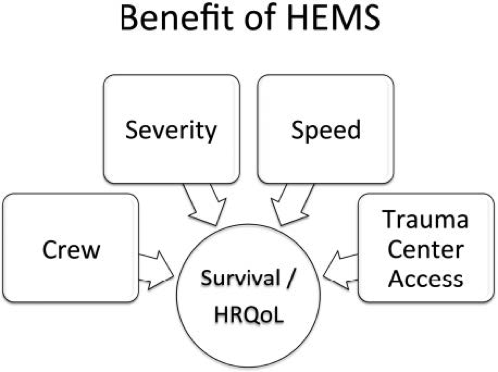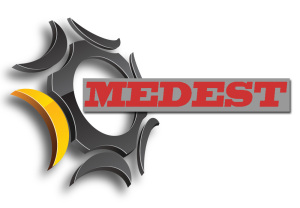Is the flutter valve beneficial? Is the chest seal itself beneficial? Or, does it convert a sucking chest wound into a life-threatening tension pneumothorax? “Why do we treat a non-lethal condition (open pneumothorax) with an intervention that may result in a lethal condition (tension pneumothorax)?” If the size of the chest seal defect is larger than the diameter of the trachea, then air will preferentially move through the chest defect which can be fatal. Many of the chest seals are being placed on small defects which could lead to a tension pneumothorax.
It is unknown whether modifying the current practice of treating an open pneumothorax with an occlusive chest dressing might cause some of these injuries to then result in fatalities.
Saving Lives on the Battlefield
A Joint Trauma System Review of Pre-Hospital Trauma Care in Combined Joint Operating Area – Afghanistan (CJOA-A)
FINAL REPORT
30 January 2013
U.S. Central Command Pre-Hospital Trauma Care Assessment Team
The current guidelines indicates commercial chest seals both vent or non vent as a valid option to treat open chest wounds. In any case if a commercial chest seal is not available the 3 sided closed dressing is no longer recommended and a total occlusive medication is the current indication.
Commercial chest seal VS improvised 3 sided chest dressing
A chest dressing closed on 3 sides was the traditional option of treatment. They are often difficult to adhere, ineffective and difficult to improvise in time-critical scenarios. New and recent guidelines recommended an occlusive medication with strict surveillance and in case of signs of tension pneumothorax the dressing must be removed. If the patients does not improve after removing the seal open thoracostomy is indicated.
There is no clear evidence to suggest that the use of one-way chest seals would reduce the incidence of respiratory complications in patients with penetrating chest wounds. However, these seals may be easier to use and should be considered as part of the medical kit for out-of-hospital settings.
BET 3: In a penetrating chest wound is a three-sided dressing or a one-way chest seal better at preventing respiratory complications?
Vent vs Non Vent Chest Seal
A vent commercial chest seal is the first line option in prehospital setting.
Both vented and unvented CSs provided immediate improvements in breathing and blood oxygenation in our model of penetrating thoracic trauma. However, in the presence of ongoing intrapleural air accumulation, the unvented CS led to tension PTx, hypoxemia, and possible respiratory arrest, while the vented CS prevented these outcomes.
Vented versus unvented chest seals for treatment of pneumothorax and prevention of tension pneumothorax in a swine model
Treatment of Thoracic Trauma: Lessons From the Battlefield Adapted to All Austere Environments
In case vent chest seal is not available use non vent chest seal and if the patients develops hypotension, hypoxia, respiratory distress, remove the seal or performa an open thoracostomy.
So what to do?
First get an airway and put the lung on positive pressure ventilation (Volume or Pressure Targeted Ventilation) :
Positive pressure in the chest during the entire respiratory cycle and avoiding negative pressure during inspiration decreases the risk of tension pneumothorax
If you have the patient on a spinal board with a cervical collar the larynx is narrowed and when the patient is in spontaneous breathing the air preferentially enters from the chest wound. Placing an OT and positive pressure ventilation avoids this mechanism and prevents tension in the thorax.
Positive pressure ventilation re-inflates the collapsed lung and improve oxygenation (PEEP) and ventilation (Minute Ventilation).
Second close the wound with
Vent chest seal as first option
Non vent chest seal if vent is not available
Non commercial chest dressing closed on 3 sides is your last resort
























God save the King!
27 GiuMatthew E. Prekker, M.D., M.P.H., Brian E. Driver, Video versus Direct Laryngoscopy for Tracheal Intubation of Critically Ill Adults
The DirEct versus VIdeo LaryngosCopE (DEVICE) trial is a prospective, multicentre, non-blinded, randomised trial being conducted in 7 EDs and 10 ICUs in the USA
Critically ill adults undergoing tracheal intubation randomly assigned to the video-laryngoscope group or the direct-laryngoscope group
The primary outcome was successful intubation on the first attempt.
The secondary outcome was the occurrence of severe complications during intubation: severe hypoxemia, severe hypotension, new or increased vasopressor use, cardiac arrest, or death.
The trial was stopped for efficacy at the time of the single preplanned interim analysis.
Conclusions: Among critically ill adults undergoing tracheal intubation in an emergency department or ICU, the use of a videolaryngoscope resulted in a higher incidence of successful intubation on the first attempt than the use of a direct laryngoscope.
Comment: This a long journey hopefully coming to an end. From 2022 we have clear evidences on the superiority of Video versus Direct laryngoscopy Hansel J, Rogers AM, Lewis SR, Cook TM, Smith AF. Videolaryngoscopy versus direct laryngoscopy for adults undergoing tracheal intubation. Cochrane Database Syst Rev. 2022 Apr 4;4(4):CD011136. doi: 10.1002/14651858.CD011136.pub3. PMID: 35373840; PMCID: PMC8978307.. Main airway management societies (Difficult Airway Society; Society for Airway Management; European Airway Management Society; All India Difficult Airway Society; Canadian Airway Focus Group; Safe Airway Society; and International Airway Management Society) recently updated their statements on preventing the accidental oesophageal intubation in that sense. Preventing unrecognised oesophageal intubation: a consensus guideline from the Project for Universal Management of Airways and international airway societies. The DEVICE trial is another brick in the wall of consciousness about superiority of VL vs DL despite some findings are not replicable ( ex. DL FPS 70,8%) in systems where airway management and expertise in DL is a longstanding tradition. But as said we didn’t need this trial to arrive at the conclusion of the journey.
Use the videolaryngoscope (VL) as first choice in emergent tracheal intubation to improve first passage success and prevent accidental oesophageal intubation.
Use direct laryngoscope (DL) just as rescue device in case of technical failure of the videolrayngoscope
All medical systems involved in airway management need to be aware of this. A videolaryngoscope is no longer an option but a standard equipment. The best choice is to have both, standard and hyperangulated geometry blades, in adult and paediatric sizes.
The first approach with a standard geometry blade permits to shift from VL to DL without changing device. The hyparangulated blade can be useful in selected cases even as first option..
We also consequently need to shift paradigm from classical way of teaching airway management, to a VL first approach as default method and simulating any tech failure during the practical training forcing the trainee to use the DL as rescue plan.
To let me know what is your opinion fill the survey at the link below:
VL first approach
Also read:
Condividi:
Tag:advanced airway management, Airway management, emergency medicine, litterature review, medicina d'urgenza, prehospital emergency medicine, videolaryngoscopy